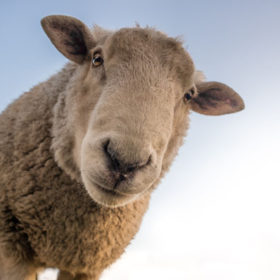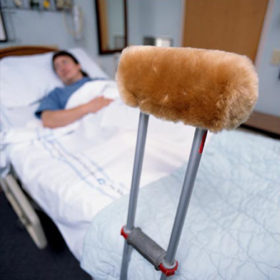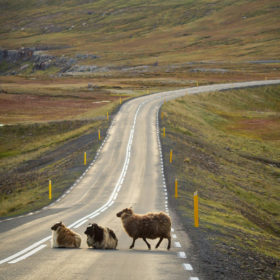Information
Fun Facts About Sheepskin

Sheep have been humans best friend for thousands of years. As some refer to a dog as man’s best friend, today’s domestic sheep have kept humans company just about as long as a trusty canine has.
But besides feeding and keeping us warm, what other facts, stories or uses have sheep provided? From clothing, doll hair, to sound proofing, there are many interesting and fun facts about sheep, sheepskin and how it became an everyday.
Quick Trip into Sheepskin History:
Sheep have been raised and tended to by humans for tens of thousands of years. They are noted as being among the first types of animals that were domesticated by humans and primarily raised for their meat, milk, and skins. (Wikipedia).
Today’s flocks actually have many descendants that can be traced to various flocks from different global regions. Most domestic sheep raised today are descendants of the Mouflon and derived from Mesopotamia (present day Iraq, Iran, and Syria) and mixed with other breeds of sheep from present day Europe and Asia. With new world expansion, sheep were transported across the different oceans with trade and new settlements.
Globally, today’s sheep flocks are raised in Australia and New Zealand. This is where they enter the global market for their meat, skins, and wool. Other countries like China, Russia and Argentina also produce sheepskin and wool.
Most of today’s wool comes from the Merino breed of sheep. Sheepskins or pelts are a by-product of the food industry. Particularly here at Engel Worldwide, most of the sheepskins we provide are Merino, but we also carry Icelandic and Tibetan pelts. Icelandic is a more rugged, thinker wool while Tibetan (or Mongolian as its sometimes called) has a longer, softer pile.
Besides warm, sheepskin in being a natural product also has been noted in being static free, wind proof and a great filtration product from solids, liquids, and gases. Sheepskin needs only a short introduction and while sheepskin has quite the history, the list of its uses continues to grow.
Sheepskin Facts and Uses.

Shearing:
Shearing is actually the skin of a sheep or lamb that has been tanned on one side leaving the wool on the other.
Strength:
Sheepskin fibers have been measured as being stronger than steel ounce for ounce.
Sheepskin and Moisture:
Sheepskin fibers are hollow which allows it to absorb 30% more of its weight in moisture while still not feeling damp or wet. If you look microscopically, you will see that each fiber resembles a miniature fur tree which also helps wick away liquids while repelling oils and grease. Sheepskin also repels dirt and resistant to bacteria’s, molds and other microscopic parasites.
Self-Cleaning:
Sheepskin is self-cleaning and can revitalize itself with just a few shakes allowing air to flow freely through the wool fibers. Sheepskin also repels odors that can become trapped in many non-natural materials as the fibers again allow air flow smoothly among them.
Sheepskin does not shed: Sheepskin does not shed as it is naturally attached to leather in comparison to synthetic fibers. A great way in determining if a material is truly sheepskin is to perform this test. If the pile pulls away from the material its attached to, then it’s not truly sheepskin.
Fire Resistant:
Sheepskin fibers are very fire or flame resistant. It has an ignition temperature point of 570-600 degrees Celsius (That is up to 1000 degrees Fahrenheit). Wool also has properties that are very unique making it very fire resistant with its high nitrogen and water chemical makeup, give it a self-extinguishing property in comparison to other materials.
Gold Panning:
 In noted ancient methodology, within the Eurasia country of Georgia, Svaneti villagers have been known to line river and stream beds with sheepskin in the hopes of capturing gold.
In noted ancient methodology, within the Eurasia country of Georgia, Svaneti villagers have been known to line river and stream beds with sheepskin in the hopes of capturing gold.
The villagers believed that as the water flowed, gold would settle into the wool fibers. During the different gold rush periods of the United States it was also rumored to have been used in similar fashions
Sheepskin in Battle:
Sheepskin was used by troops in China during the Han Dynasty to build rafts to travel down the Yellow River. The pelts were showed together and filled with air creating arm rafts.
It was provided to the Australian army as vests during WWI to keep the solders warm on the front line. During WWII sheepskin was also issued to Naval pilots as lining within their jackets as they flew over the winter skies of Europe.
Sheepskin is also been said to have been part of the expeditions for both the North and South Pole.
Skin Care:
It has been noted that sheepskin contains lanolin, which is a waxy substance that helps sheepskin repel moisture and keep the elements out. For humans, lanolin helps soften skin and keep it moist. This is why sheepskin is very soft and comfortable. Sheepskin is hypoallergenic. This makes sheepskin footwear and genuine sheepskin rugs perfect for children with sensitive allergies.
Helping the Body Heal
 Sheepskin’s naturally crimped fibers form a springy, cushioned support that cradles your body, relieving pressure points, muscle aches and pain.
Sheepskin’s naturally crimped fibers form a springy, cushioned support that cradles your body, relieving pressure points, muscle aches and pain.
Medically, sheepskin is used with patients who are temporarily immobile in keeping their skin from breaking down and sub-coming to pressure points.
Sheepskin also disperses heat and is cool to the touch.
Painting Ceiling and Walls
Many paint rollers are actually made from wool or sheepskin. The rollers are sheared for depth and texture.
Bents Back into Shape:
Sheepskin in being a natural fiber, can displace weight and be bent repeatedly thousands of times yet still retains its natural shape and feel.
Filtering the Air:
Sheepskin does an outstanding job in capturing dust and filtering the air within its pile. With a simple few shakes rejuvenate it. Sheepskin also deters static in being a natural material that does not conduct electricity.
Quieting down the Orchestra
Sheepskin was noted that sheepskin has been laid across the tops of pianos as a damper and providing a more muted, sound during practice and performances. Large sheepskin pelts sown together have been known to show up in recording studios in helping with acoustics.
Keeping Spirits at Bay:
In Croatia during certain festivals, to ward away evil spirits, villagers dress up in sheepskin and masks and parade through the villages. It is said that these individuals partake in this ritual to ward off the winter spirits. They are also referred to as bell-ringers or Zvončari, people who travel village to village ringing bells and cleansing the town of these evil spirits.
Icelandic and Tibetan Lambskin
Icelandic Sheepskin: Known for adapting to the rugged north of the tundra Icelandic sheepskin has a shaggy look and the wool is coarser. It is thought to had descended from the Vikings and brought to Iceland from Europe. Icelandic pelts retain a natural, Nordic look and feel yet carry the same properties as other sheep globally.

Tibetan Lambskin Origins – Tibetan lamb and sheepskin have been thought to have originated from the Chinese provinces of Shansi, Shensi and Hopeh. (citation needed). Tibetan wool fibers are known for their soft, curly look and feel which is used often as hair for dolls and other children’s toys.
Tibetan lambskin is many times associated with Mongolian lambskin with many people not knowing it’s the same.
Finally, sheepskin naturally resists snags, tears, wrinkles, soiling and pilling. It retains its shape, look, and feel after being used again and again.
Sheepskin: Natures Wonder Material
Sheepskin is the natural material that has maintained itself for centuries. It has been led into battle, seen as a way to ward off even spirits, assisted in the performance of concerts, and assists with helping people heal. It’s a centuries old material with many wonders and uses.
Information for this post gather from the following sites:
https://en.wikipedia.org/wiki/Sheepskin
https://furguide.wordpress.com/2010/09/21/sheepskin-facts/
https://www.burrowandhide.com/blog/factsaboutsheepskins
https://furtraders.com/about-sheepskin/
https://www.shearcomfort.com/blog/sheepskin-used-5-crazy-things/
